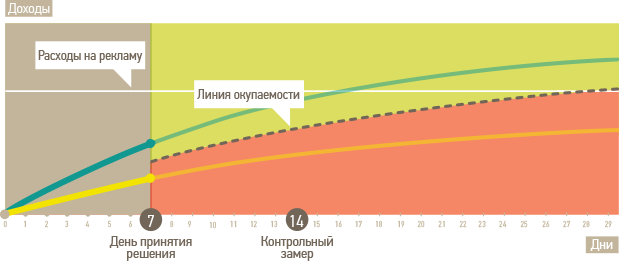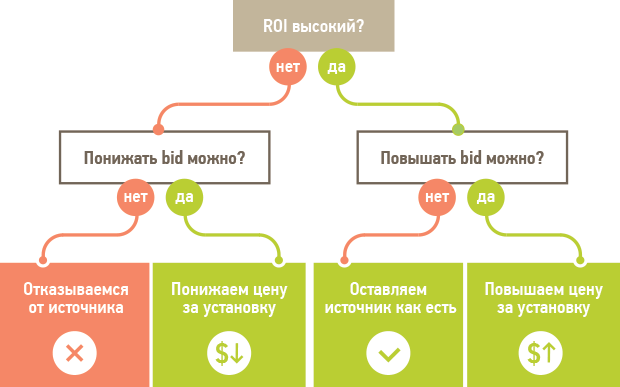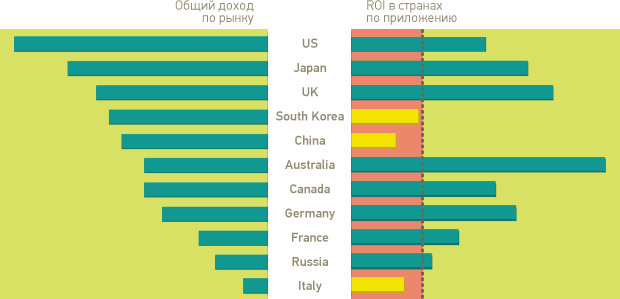Pixonic has shared with us an interesting article about how to evaluate the effectiveness of advertising by ROI indicator.
What to do when you have a project whose performance you consider worthy? The answer is simple — to fill the project with traffic and receive money. I want to share some of the principles that we use at Pixonic when promoting projects. Looking ahead, I will say right away that we received the main stream of advertising users through direct purchase of installations — CPI (Cost Per Install), but this does not mean that this method will be the best for all projects.
Principle one: performance evaluation
We evaluate the effectiveness of advertising campaigns by the ROI (Return On Investment) indicator. Within the framework of one campaign, we consider it equal to the ratio of revenue from users to the cost of attracting them (ROI = Income / Expenses × 100%). Measurements are carried out using an analytical tool of its own design, revenue from users is tracked by cohorts on the 7-14-30 day after their registration. The preliminary decision on the campaign is ready in about 7 days after its completion, if necessary, we repeat the measurement in 14 or 30 days. Naturally, in one or two weeks, it is unlikely that users will have time to pay off, but there is enough information to predict income and make a decision about continuing or disabling an advertising campaign. It is also useful to check the retention and behavior of players during the campaign in order to turn it off in time if users look like bots and do not play the game.
Below is an illustration of how, according to the income accumulation charts of two traffic sources, you can quickly make a decision about their payback.
The second principle: sorting sources and setting them up
To attract a serious number of users, one advertising partner is not enough, so we go through dozens of sources, constantly evaluating, configuring and disabling inefficient ones. An important point is that, thanks to analytics, we can evaluate each campaign individually, no matter how many sources are launched at the same time. Customization options include changing the types of advertising within the source, installation prices, and targeting by country. Here I present a simplified scheme of work on estimating the ROI of sources and the corresponding setup of the installation price (bid).
And the third principle: targeting by country
It is important to understand as soon as possible which countries your application is best suited for in order to sort through sources with the target already set correctly. The first time we just bought worldwide traffic, after which I made a simple assessment by calculating and dividing the total revenue by country by the number of installations from these countries (it is better if it is possible to calculate the ROI by country). I made this assessment a few weeks after the purchase of the installations.
It is worth noting that countries with a small number of installations can show an unreliable result, so I checked several times that there were no significant changes in the assessment over time. This option can be optimized by first setting expectations based on general market statistics. At the same time, it is more important to take into account the experience of applications similar to yours. For example, the first three places in the top 10 countries by income of a popular football manager are occupied by Turkey, Indonesia and Thailand, while of the three leading countries in the market – the United States, Japan and the United Kingdom – only the United Kingdom was noticed, and it was only in 10th place. That is why it is important to look at both the overall picture of the market and the indicators of a specific application.
I described our experience of “smart” promotion, in the following articles read a description of how we “threw” the application into the top and what came out of it. In conclusion, I want to say that compliance with these principles does not guarantee success — there is always room for situational decisions, you need to constantly keep your finger on the pulse, measure various indicators and monitor market trends.
The author of the material is Igor Klyukin, a leading analyst at Pixonic



